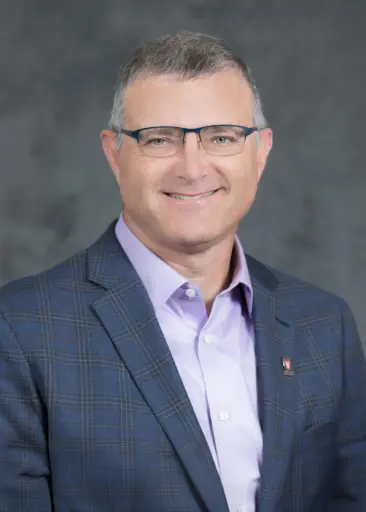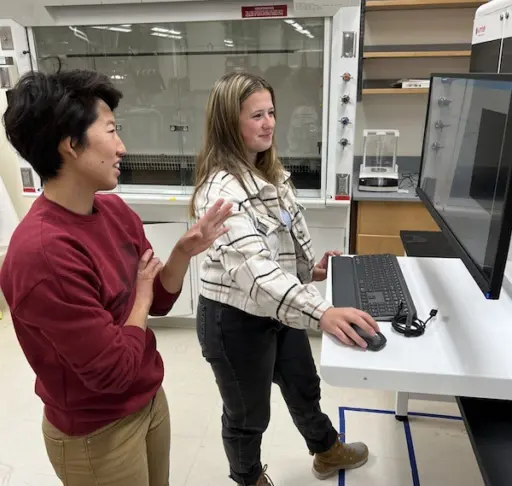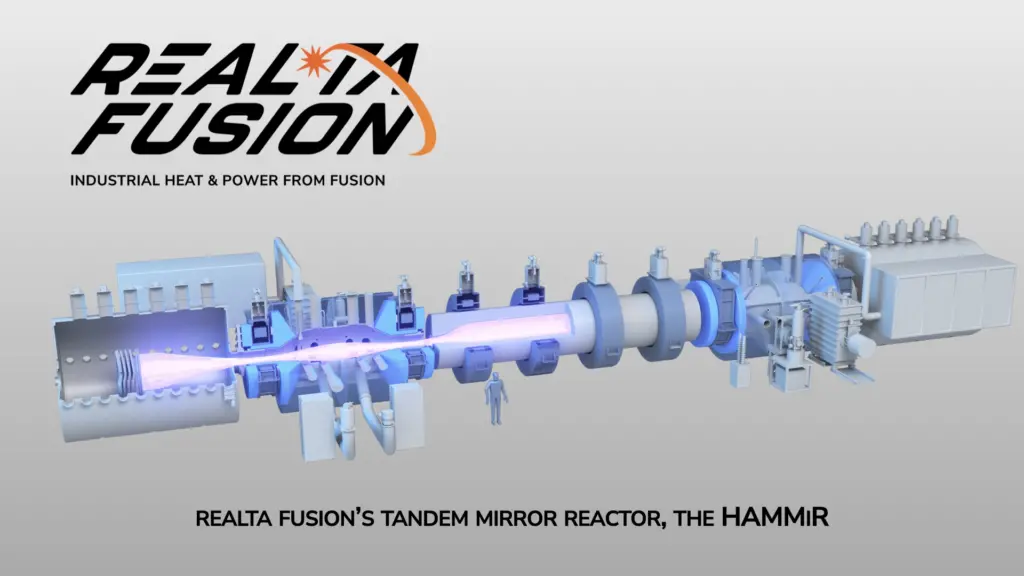In recent years, there has been a significant rise in companies working on advanced nuclear reactor systems and fusion technology to aid in the transition to clean energy.
It’s also perfect timing for the Department of Nuclear Engineering and Engineering Physics to sharpen its focus on nuclear engineering. Paul Wilson, Grainger Professor of Nuclear Engineering and department chair, says there’s a major opportunity for the department to grow, leverage its expertise and cutting-edge facilities, and partner with these companies on innovative fission and fusion projects.
 Paul Wilson
Paul Wilson
To paint a clearer picture of its refined scope, the department is seeking approval to change its name later in 2023 to the Department of Nuclear Engineering and Engineering Physics.
“With the name change, we’ll be making it very clear that we are a nuclear engineering department, and this name recognition will enhance our ability to recruit faculty and students in nuclear engineering and our world-class fusion plasma physics program,” Wilson says.
In 2023, the department is hiring three new faculty members with a research focus on fusion technology. Wilson says the department is particularly excited to hire faculty members whose research can bridge fission and fusion technologies, allowing the department to make a greater impact and capitalize on emerging opportunities.
For example, Assistant Professor Juliana Pacheco Duarte, who joined the department in fall 2022, is an expert in nuclear reactor safety, and she can apply her experimental and computational methods to analyze both fission and fusion reactors. “One reason I wanted to join UW-Madison is due to the many opportunities for collaboration with the large group of renowned fusion researchers here, enabling me to expand my research beyond fission,” Duarte says. “In order to build fusion reactors, we also need to understand the safety aspects, cooling systems and the heat transfer process to generate electricity, and I can make a strong contribution in these areas with my research.”
In the past decade, there has been substantial growth in private companies exploring novel ideas in fission energy, and the department has a strong track record of collaboration with a number of these companies, including TerraPower, Kairos, X-Energy, General Atomics, BWXT, Framatome and Westinghouse.
In one current project, Assistant Professor Ben Lindley (PI) and Associate Professor Adrien Couet are working with collaborators from Framatome, X-Energy and Idaho National Laboratory to a design a small modular high temperature reactor control rod that extends telescopically. This compact component substantially reduces the length of the depth of the silo and therefore could offer a major cost benefit.
Department faculty Couet, Kumar Sridharan, Grainger STAR Professor in the departments of engineering physics and materials science and enginerring, and Assistant Professor Yongfeng Zhang are leaders in studying materials for extreme nuclear environments, and they’re partners in a number of research projects that are tackling key challenges for industry. Sridharan and Couet are co-principal investigators on a U.S. Department of Energy Advanced Research Projects Agency-Energy project, led by the University of Tennessee-Knoxville, that aims to develop a superior precipitation-strengthened alloy with improved creep, irradiation and corrosion resistance. The alloy will enable higher-temperature operation in molten salt nuclear reactors, fluoride-salt-cooled high-temperature reactors, and concentrated solar power systems.
 EP PhD student Bonita Goh (left) and MS&E undergraduate Isabelle Baggenstoss research materials for molten salt applications as members of Associate Professor Adrien Couet’s group. Credit: Adam Malecek.
EP PhD student Bonita Goh (left) and MS&E undergraduate Isabelle Baggenstoss research materials for molten salt applications as members of Associate Professor Adrien Couet’s group. Credit: Adam Malecek.
“This project will benefit industry by decreasing risks associated with new alloy development and significantly accelerating the timeline for commercializing this new alloy for use in clean energy technologies,” Couet says.
In addition, Zhang is lending his expertise in multiscale modeling to a University of Florida-led project that aims to understand hardening in reactor pressure vessel steels caused by manganese and nickel rich precipitates, which is a critical issue for predicting and extending reactor lifetimes.
More recently, an influx of private investment is supporting a growing number of emerging companies working on fusion technology.
“As this private money comes in to the industry, we anticipate a lot of interest in fusion technology,” Wilson says. “While a lot of these companies have a good handle on the plasma physics, they don’t have much expertise in the nuclear engineering aspects of making a fusion power plant, and that’s where we have a great opportunity to contribute with our long history in fusion technology and power plant design studies. With recent faculty hires in the department, combined with the new hires we’re currently in the process of making, we’re going to be in a really exciting place to support technology developments in both fission and fusion.”
Some of these early-stage fusion companies have close ties to the department. SHINE, the Janesville, Wisconsin-based company founded by alumnus Greg Piefer (BSEE ’99, MSNEEP ’04, PhDNEEP/MedPhys ’06), is applying fusion technology to manufacture isotopes with a range of medical applications, from diagnostic scans to treatments. Chris Hegna, the Harvey D. Spangler Professor of engineering physics, and Electrical and Computer Engineering Professor Emeritus David Anderson are co-founders of the startup Type One Energy Group, which aims to develop a large-scale stellarator fusion reactor that uses high-temperature superconducting magnets.

In addition, Lindley and Engineering Physics Professor Oliver Schmitz, along with physics department faculty, are members of the founding team for Realta Fusion, an early-stage UW-Madison spinoff company that seeks to develop the lowest capital and least complex path to commercially competitive fusion energy.
The Realta Fusion team will use a reactor that’s under construction—the Wisconsin HTS Axisymmetric Mirror (WHAM), led by Physics Professor Cary Forest—to demonstrate new high-temperature superconducting magnets and radio-frequency ion acceleration. This will lay the foundation for the team to design a second prototype to advance its technology for a simpler linear fusion reactor.
Lindley says the spinoff company is seeking to collaborate with multiple UW-Madison NEEP faculty in modeling and analysis of the fusion reactor, including the systems around the plasma core.
“The sharpened focus on fusion within the department leverages UW-Madison’s already prestigious position as one of the top fusion engineering programs,” Lindley says. “We’re enthusiastic to forge a lasting partnership between Realta and the department to make a commercial fusion plant a reality, do groundbreaking science, help develop the fusion workforce and benefit the state of Wisconsin.”
Featured image caption: EP Assistant Professor Juliana Pacheco Duarte joined the department in fall 2022. Credit: Joel Hallberg.